Sales velocity is the speed at which your team converts a lead to a customer.
Knowing how long it takes to turn lead opportunities into revenue will help you assess the health of your pipeline and ensure that your lead generation is as effective as possible.
Analyzing your sales velocity also involves checking metrics like average deal size, customer lifetime value, and average sales cycle length, which can help you learn more about your business.
Following our tips, you’ll know how to track and improve your sales velocity.
AI highlights
- Sales velocity tells you how long it takes to turn lead opportunities into customers.
- Calculating sales velocity is easy. Pick a period to measure, such as a quarter, month, or year. Take your qualified opportunities, average deal value, and win rate. Now, multiply these three figures and divide the result by the average length of your sales cycle to get your velocity rate.
- Sales velocity = Number of opportunities x Deal value x Win rate / Length of the sales cycle
- Sales teams should aim to achieve a high sales velocity, which means opportunities move through your sales funnel promptly, and sales reps have an efficient sales process, increasing sales productivity.
- A low sales velocity suggests reps take too long to close deals, with leads stuck in certain pipeline stages, or focus too much on lower-value deals.
- Here are key tips to boost sales velocity:
- Clean dirty data with data enrichment tools like PhantomBuster’s HubSpot Contact Data Enricher.
- Ensure that leads are worth following through targeted lead generation and enrichment.
- Leverage lead scoring to help you identify the best opportunities and prioritize who to target first based on whether they match your ICP.
- Target people engaging with industry-related topics, such as commenting on a competitor’s or an industry influencer’s post on LinkedIn.
- Use AI automation, such as the AI LinkedIn Message Writer, to personalize outreach messages based on real data, establish rapport and close more deals.
- PhantomBuster is a top sales automation tool that can enhance your sales process. It helps you identify high-potential leads, enrich your contacts list with accurate data, and automate your outreach for better sales results.
What is sales velocity?
Sales velocity (sometimes called pipeline velocity) is the speed at which a customer moves through your sales pipeline and generates revenue.
Calculating sales velocity only requires access to historical data and some simple math. All you need is a set period (like a month, sales quarter, or a year) and to be able to find out for that period:
- Your number of opportunities.
- Your win rate.
- Your deal value.
- How long do sales take to come in.
Sales velocity formula
Sales velocity = Number of opportunities x Deal value x Win rate / Length of the sales cycle

As an example, let’s say your sales team has:
- 60 opportunities in their pipeline.
- An average deal size of $3,000.
- A win rate of 40%.
- An average conversion time of 30 days.
Your team’s sales velocity formula would look like this:
Sales velocity = Opportunities (60) x Deal size ($3,000) x Win rate (0.40) / Average conversion time (30 days) = $72,000 / 30 days = $2,400 / day
Opportunities
Opportunities = Number of leads that have been qualified on specific criteria
Look in your database for qualified sales opportunities you have already vetted as potential matches for your product or service.
Typically, these are leads scored according to your Ideal Customer Profile (ICP) or leads with the budget, authority, need, and timing for your service.
Average deal value
Average deal value = Total revenue generated in a time frame divided by the number of deals
Deal value (or deal size, customer lifetime value, or sale price) is the average amount you make in a sale. If you made $50,000 in a month over five deals, you would have an average deal value of $10,000.
Explore your CRM’s ‘Sales’ section to find this figure based on the time frame you need.
Win rate
Win rate = Dividing the number of won deals by the number of available opportunities
The win rate (the sales pipeline conversion rate) is the number of paying customers you generate from available opportunities.
If you won 20 new customers but 30 opportunities didn’t close, 20 won deals ÷ (20 won deals + 30 lost deals) * 100 = 40% win rate.
Look in your CRM to find the customers that closed in a period and identify the opportunities you had simultaneously.
Sales cycle length
Sales cycle length = Total number of days it took to close every sale divided by the total number of deals
To calculate sales cycle length, find every customer’s time from the ‘first touch’ of contact to a sale.
If sale 1 took 20 days, sale 2 took 25, and sale 3 took 30, they add up to 75 days.
Divide 75 by the three sales for your average sales cycle of 25 days.
Sales velocity vs. Pipeline velocity
There is no difference between sales and pipeline velocity; they both refer to the speed at which leads move through your sales process, ultimately converting into closed deals.
Understanding this is key to tracking your sales productivity and efficiency and predicting revenue. By improving pipeline velocity, you can simplify your sales process and achieve better results faster.
How to increase sales velocity
Now that we’ve covered calculating sales velocity let’s review some strategies to improve this metric.
Add qualified leads to your sales pipeline on auto-pilot
Accelerating sales velocity is all about quickly guiding qualified leads through your pipeline. Focusing on in-market prospects can boost your conversion rates and drive better results.
A great tactic to find these warm leads is to look for intent data, such as searching for people commenting on a competitor’s post on LinkedIn.
We recommend using PhantomBuster’s LinkedIn Post Commenter and Liker Scraper to find and export these contacts.
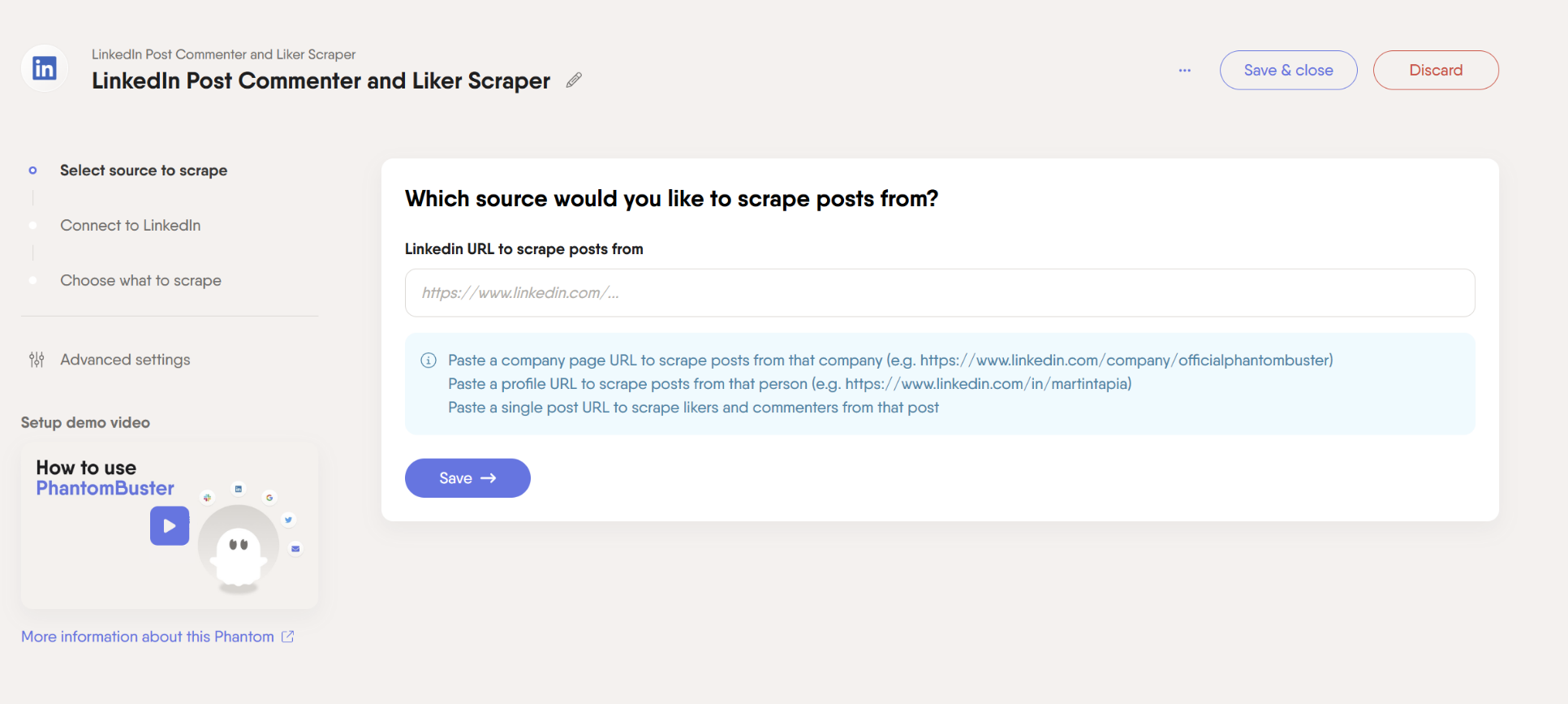
When you run the automation, you’ll get a prospect list, including their comments and LinkedIn profile URL, ready to export to a CSV, enrich further, or contact.

Keep your pipeline free of dirty data
A clean database without irrelevant leads is far easier to work from, so you should keep dirty data (lead information that is outdated, incomplete, or duplicated) away from your CRM.
Cleaning a database also means filling data gaps. With all the lead details, you can use lead segmentation for a hyper-targeted approach.
To do this, use data enrichment tools like PhantomBuster’s HubSpot Contact Data Enricher.
You can enrich the list of HubSpot contacts you want with LinkedIn profile details by launching the flow, and the missing job titles, industries, or other key data will be added automatically to your lead list.
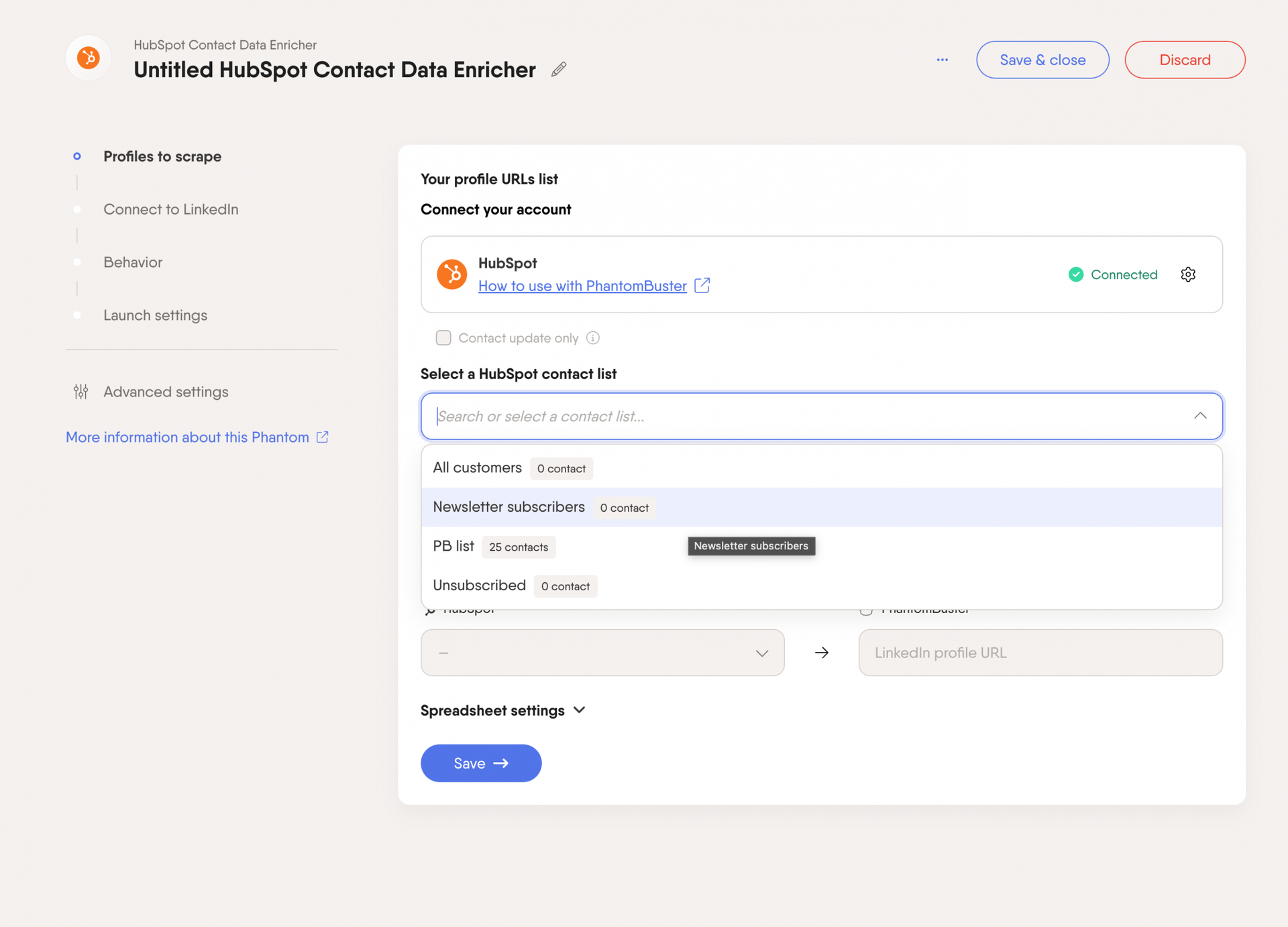
Because the updated information goes directly to your HubSpot account, you get relevant data you can trust for outreach campaigns.
Use lead scoring and prioritize leads with a higher potential LTV
To ensure you’re targeting the right prospects, you must score your leads based on how well they match your ICP.
AI makes lead scoring much easier. For example, with PhantomBuster’s AI LinkedIn Profile Enricher, you can create a prompt, add your whole lead list, and get a score for each lead based on their conversion likelihood.
A good prompt could be:
“Based on the profile details in each account, create a lead score for each that represents the likelihood of each profile buying a PhantomBuster subscription. Follow the rules below:
1. All scores must be from 1 to 5, 5 meaning most likely to buy.
2. Sales and marketing job titles should score higher.
3. People who like tools like HubSpot and other sales tools should get extra points.
4. People who comment on AI and automation topics should score extra points.”
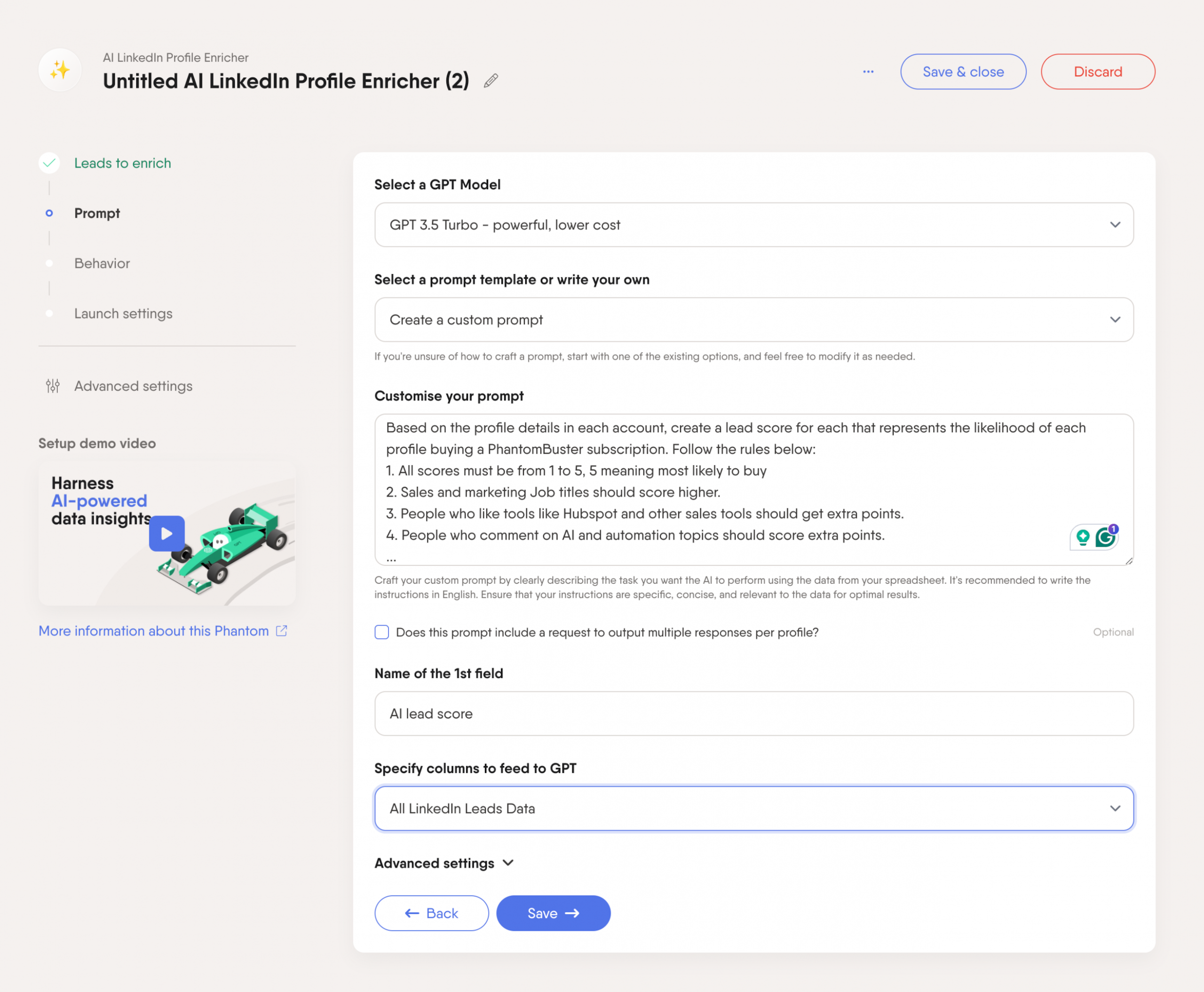
Run the flow, and you’ll be presented with the score of every lead, ready to enrich further or contact.
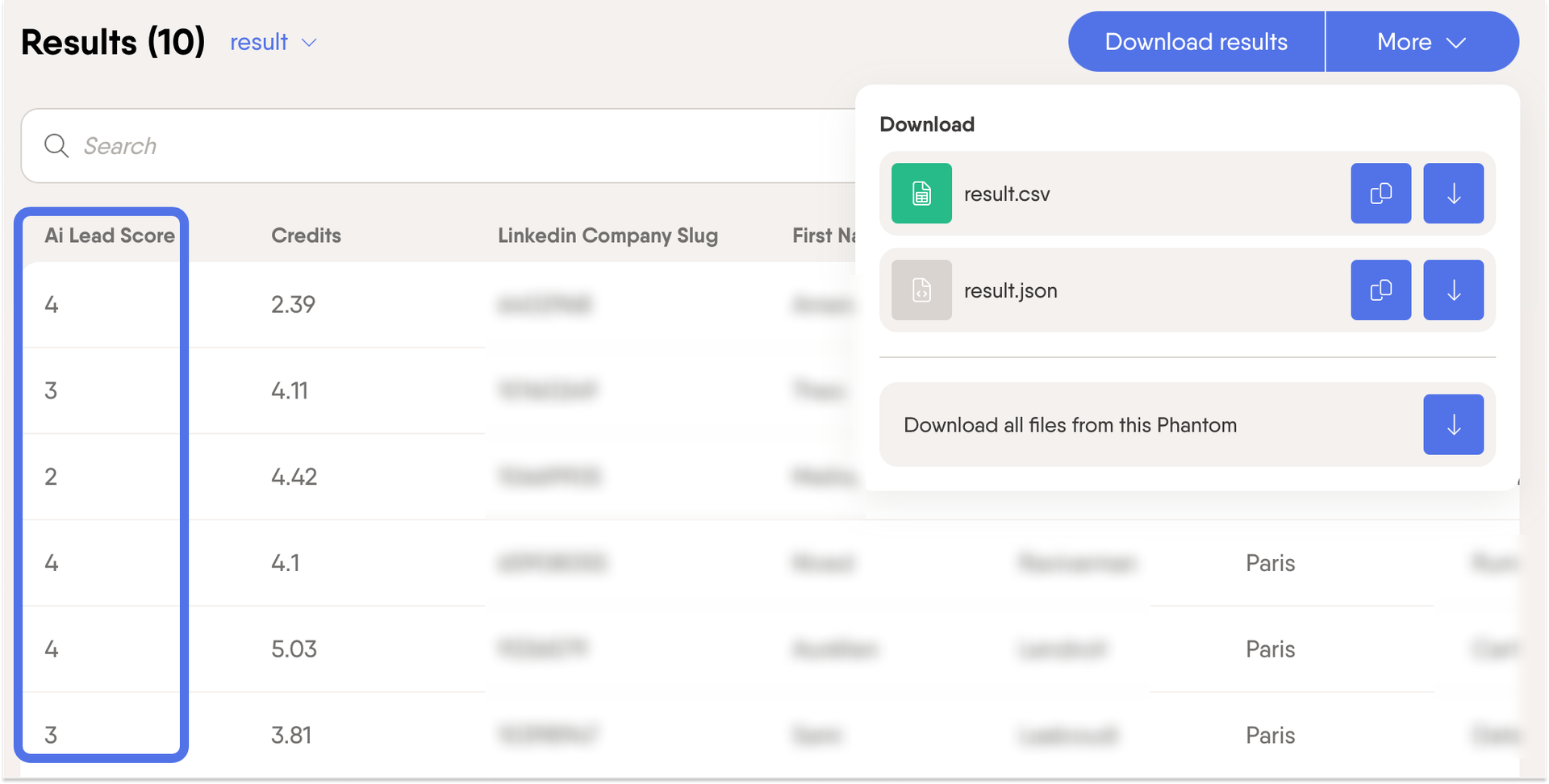
The beauty of lead scoring is that it can be run repeatedly, meaning you always have potential ways to analyze any new leads you receive.
Automate social selling to shorten the length of the sales cycle
You can’t reach your optimum sales velocity without a warm outbound strategy. This will help you build authentic connections and optimize your chances of closing deals.
Instead of doing everything manually, which will slow down your sales process, we recommend using automation tools, such as the LinkedIn Auto Follow, to automatically follow multiple prospects interested in your niche.
Provide the tool with the profiles to follow, set the right guardrails around following limits, and then relax while the tool does the heavy work.
This way, you’ll build awareness before you engage with those contacts, developing relevant connections and potentially improving sales velocity.
Personalize outreach messages based on real data
The perfect outreach message will increase response rates and improve sales velocity.
If you target their pain points, they are more likely to respond and be closer to purchasing.
To help you move faster, use AI to craft messages that feel personal. With the AI LinkedIn Message Writer, you provide a list of people to reach out to, and the tool crafts a compelling message based on their profile or even activity.
Write a prompt such as:
“Write a LinkedIn connection message based on the LinkedIn profile data fed to you, the below context, format, and content:
Context:
– LinkedIn connection messages must be limited to 280 characters.
– My name is <your first name>, and I work as a <your job title> at <your company name>.
– I want to connect with interesting and experienced professionals to expand my network and stay in touch with them.
– I do not possess experience and skills similar to theirs.
– I am not looking to offer them any services or recruit them.
Format of your message:
– It must contain less than 280 characters.
– It must be written in English.
Content of your message:
– You must quote one or two data points from the profile.
– It must be written in a fun, casual way.
-You must not use the word “fellow.”
Here is an example of a good connection message:
“Hey, Ben! I am impressed by your experience leading sales teams at GoodProduct Inc. I would love to connect and learn more about your expertise in business development and SaaS. No sales pitch, just a curious recruiter expanding his network!”
The message must be shorter than 280 characters. If the message is longer than 280 characters, rewrite it to shorten than 280 characters.”
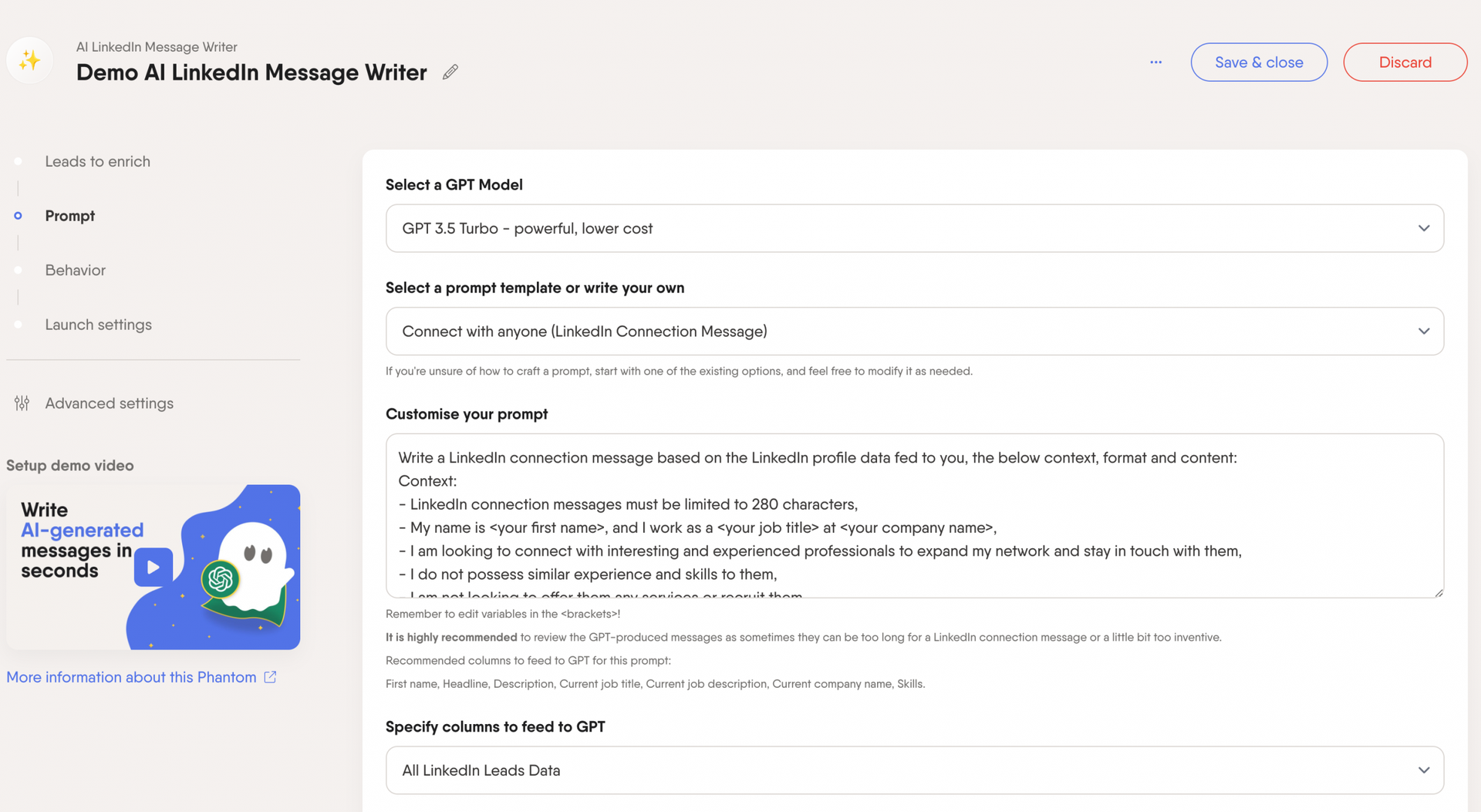
While your competitors may copy and paste generic messages, this approach produces substantially different messages, improving your sales velocity and success.
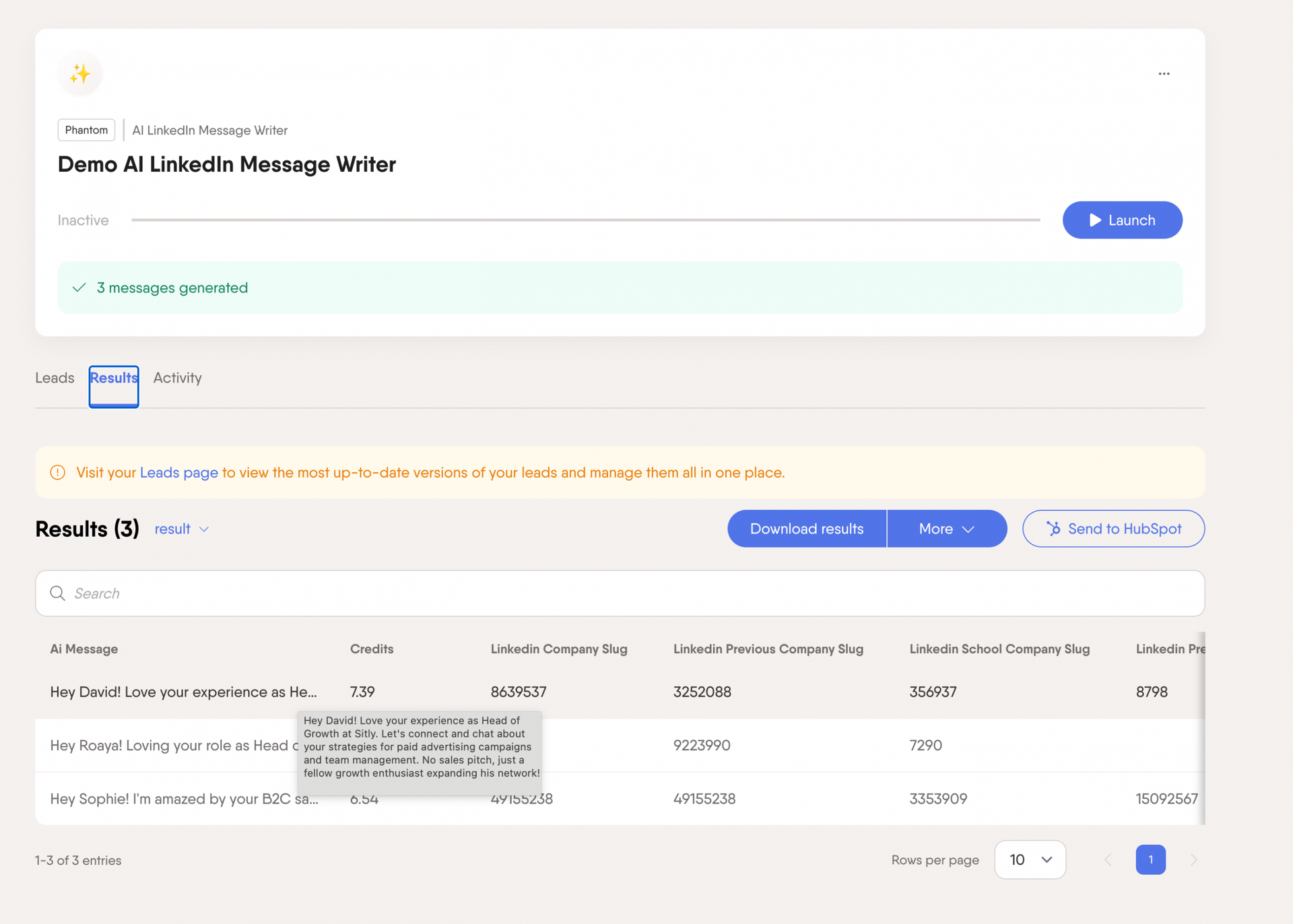
💡 We also recommend checking our AI Prompt Guide to get pro tips from Brian, our PhantomBuster coach, who will show you how to craft the most effective AI prompt.
Respond to leads fast
The faster you can speak to leads while they are in a decision-making mindset, the better your chances of moving them through your sales funnel and improving your sales velocity.
A study of 5.7 million inbound leads shows that conversion rates are 8x higher if you can respond in 5 minutes (InsideSales), yet less than 0.1% of inbound leads receive a response within this time.

Ensure your sales teams have the time and support to contact their leads. Automated tools can help, but incentives should also be considered for faster lead engagement.
Ask your sales teams what would help them improve their speed in responding.
Adjust your pricing strategy to align with the target audience
Another effective way to improve sales velocity is to boost the size of each deal so sales teams need to do less of them.
To get bigger sales opportunities, ensure that you:
- Create a strong lead magnet and offer content that genuinely addresses your audience’s needs.
- Use sales tools to demonstrate success in their sector to build trust.
- Have the headcount, expertise, and time to close big deals while maintaining a good relationship with smaller prospects.
- Have processes to ensure the sales team can identify upsell and cross-sell opportunities.
Consider sales discounts
Sales discounts can eat into your bottom line if you offer them too often, but they can also be a lever to pull to improve sales velocity occasionally.
Consider them if a lead reaches a specific pipeline stage and has a particular value for your business.
Automate repetitive tasks
Manual tasks distract your sales teams, so consider automation tools to enhance sales velocity and productivity.
Here are a few examples of tasks you can automate:
- Generate high-quality leads based on intent data and how well they match your ICP.
- Leverage lead scoring to provide scores based on the profile’s details and conversion likelihood.
- Track job changes automatically and stay on top of opportunities.
- Craft personalized messages and automate your sales outreach.
- Avoid manual data entry and keep your CRM updated with no manual effort.
Increase sales velocity with PhantomBuster
PhantomBuster is a great tool for accelerating sales velocity by automating repetitive tasks throughout the sales process.
It streamlines lead generation, enriches data, and automates workflows, allowing your team to concentrate on nurturing relationships and closing deals.
Here are some of the top features and benefits to improve sales velocity:
- Intent-based lead generation that allows you to connect with warm prospects who are ready to engage.
- AI-powered lead enrichment that finds and verifies contact info, adding valuable details to your list.
- Seamless HubSpot bi-directional integration for smooth workflow automation and updated information.
- 100+ pre-built automations that handle tasks on platforms like LinkedIn and Sales Navigator, taking care of repetitive work so your team doesn’t have to.
Conclusion
Sales velocity calculations are a great way to see what’s happening in your business.
If your sales velocity seems off, it may be time to hire, train, or invest in tools to support your sales reps.
If you’d like to see how automation can boost sales velocity, try PhantomBuster free for 14 days and see the improvements for yourself.
